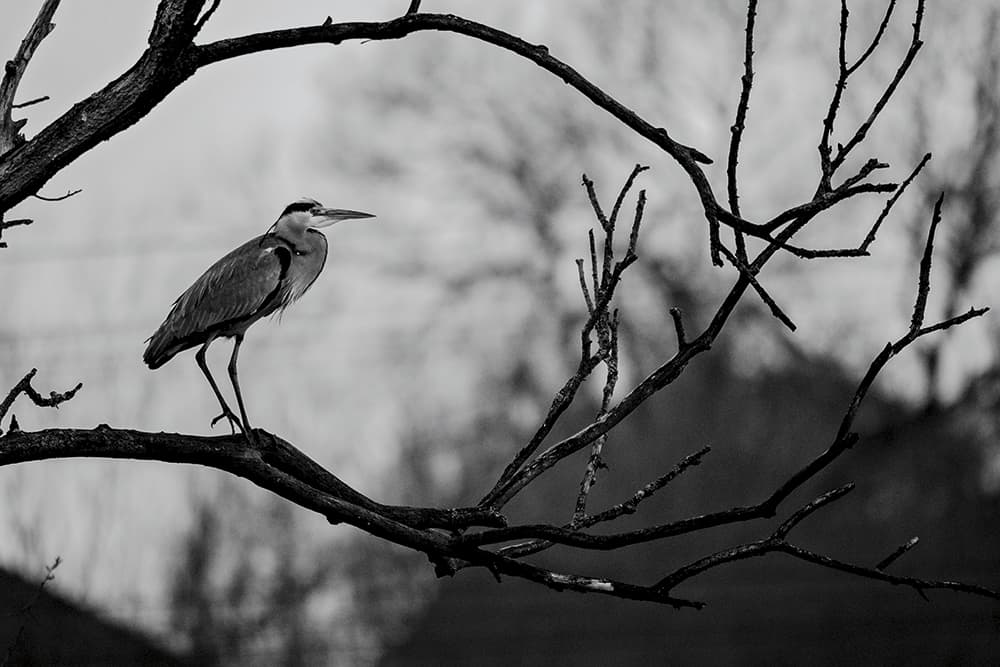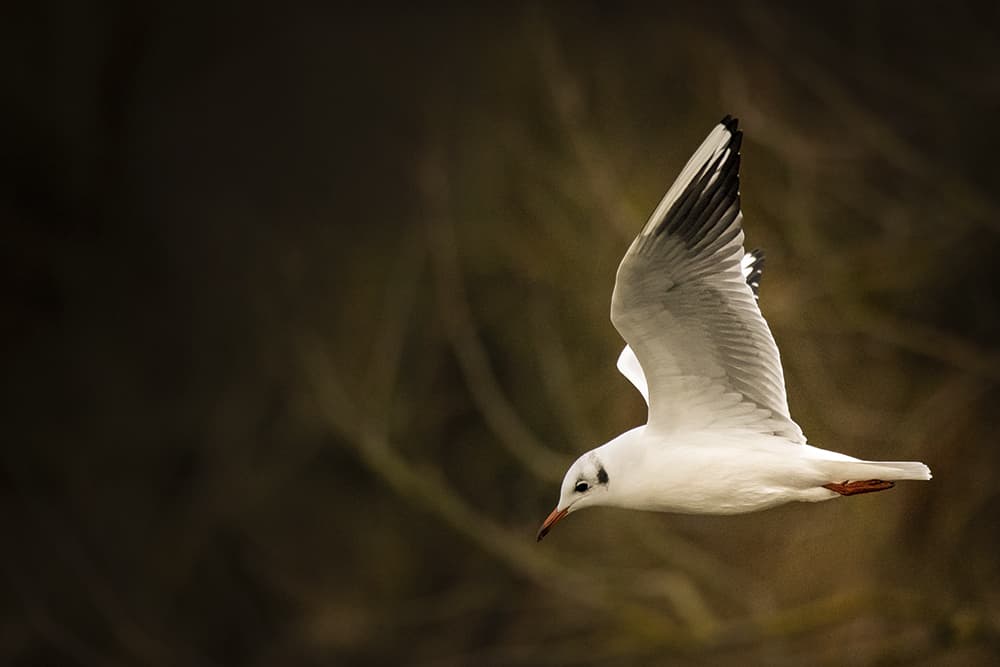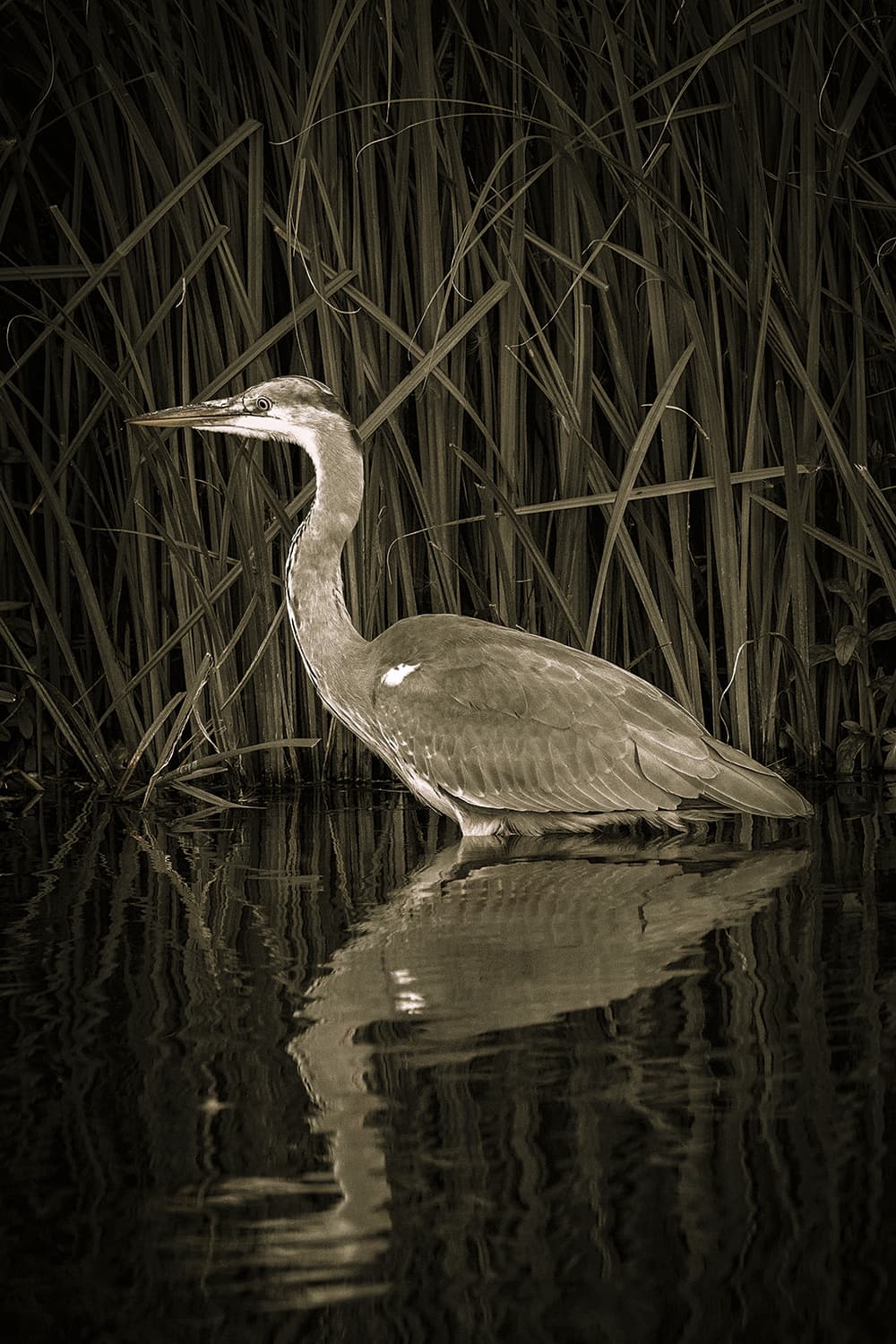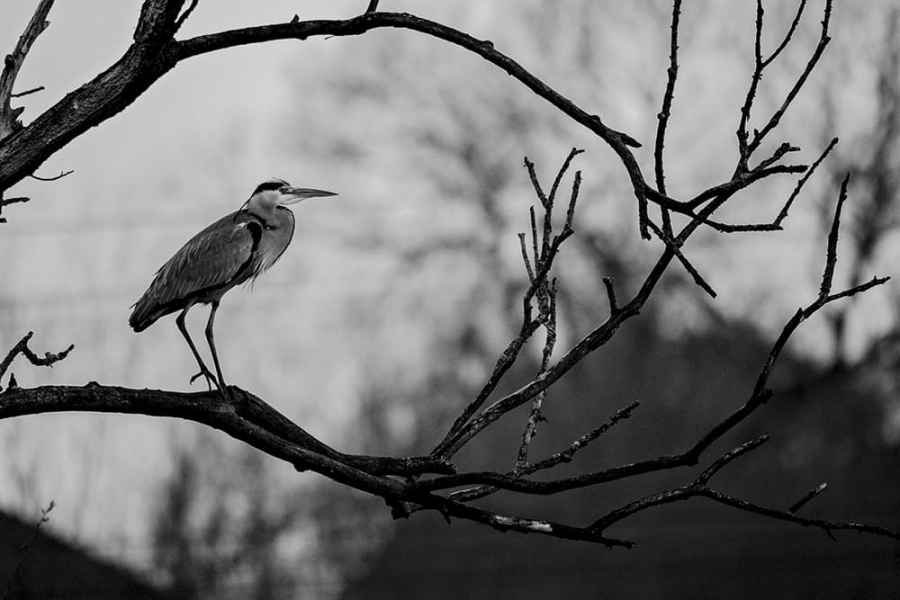
One of the most satisfying aspects of photography is that moment when you finally find your niche. Starting out, a quick glance through your portfolio will reveal myriad styles and genres all vying for the viewer’s attention. However, as time goes on a photographer will begin gradually to whittle down their interests and focus their attention on the genre that most appeals. For some it’s street photography, for others landscapes. But there are many who find themselves falling into the infinite rewards of wildlife photography, a genre that can help bring a person much closer to the natural world.
One such individual is Stafford-based photographer Adrian Clarke, who is building up an impressive portfolio of bird photography. Many of his images are notable for their low-key and minimalist style – a method that introduces a unique level of character and atmosphere into his subjects. Adrian is also a father of three children, including twins who have cerebral palsy, epilepsy and special educational needs. In this way, photography offers a respite from the stresses of family life and a therapeutic outlet for his creative talents.
‘I started photography when I was a kid, but for one reason or another took a lengthy break,’ says Adrian. ‘When I returned I was fairly aimless with what I was shooting. I just wanted to get back into the practice and experiment with a variety of styles and techniques. I’ve always been drawn to nature, so a lot of this took place within the landscape and marshes around my home. Between shots I began to notice the wildlife, particularly the birds, and started making a note of their patterns of behaviour. It was a very calming thing to observe.
‘Each species has its own traits and personality. It’s a real challenge to represent their individuality in ways that I find interesting and different. Eventually, I found I was shooting more birds than landscapes. I then began changing my skills and equipment to reflect that. It also doesn’t hurt that I’m lucky enough to have a wetlands nature reserve five minutes from my door, so even if I have limited time accessibility is pretty easy.’

One of the pitfalls of photographing any bird is that they’re faster than you will ever be. All images by Adrian Clarke
Visual appeal
Of all the birds Adrian encounters on his days out shooting, he has a particular affinity for herons. The first time he saw one, he was impressed by its size and grace. When he finally got close enough to watch one fish, he was struck by the speed and ferocity of its catch contrasted against the calm and dignified hunt that preceded it.
‘I find herons visually interesting because of their markings and the way the same bird can look completely different depending on how it holds its neck,’ says Adrian. ‘I usually try to avoid taking lots of photos of the same bird, whether it’s one popping his head out of the grass or sitting peacefully by the riverside.’
As anyone who has tried their hand at bird photography will tell you, there are many pitfalls. It really isn’t the easiest task and can only come from a dedication to the craft.
‘The pitfalls are that herons – in fact, any bird species – are faster than you will ever be,’ adds Adrian. ‘They’re certainly better at hiding than you and can usually see you a long time before you see them. It should go without saying that good camouflage and some field skills help, but unless you’re in a hide you’re kidding yourself if you think they can’t see you.’
Adrian says it’s also difficult getting yourself into a position where you can compose the image to achieve what you want from it. This is where patience and observation come into play.
‘I have to be honest, those qualities are my weaknesses,’ Adrian admits. ‘While I respect photographers who can camp in a hide all day for a shoot, I find it hard. I do intend to give it another try this year, as I always find myself thinking I’m missing something. This working method has served me well so far. Most of my best shots have been hit and run.’

The birds speed makes it very difficult to get into position and compose an image
Keeping it simple
Noted for his low-key approach, Adrian says that it’s a good technique as it cuts out any unnecessary distractions and allows the viewer to concentrate on the composition and story of an image. ‘A lot of my work is fairly dark in feel, and I’m especially fond of black & white,’ he says. ‘I put this down to the fact that I started shooting images back at school on a Praktica MTL5 loaded with black & white film. I remember once posting a black & white image of a heron on a photography forum, which seemed to really offend the “wildlife crew” for what seemed to be no other reason than it being black & white. It actually spurred me on to develop the style further.’
Adrian identifies an unusual influence in his work – that of Armenian-Canadian portrait photographer Yousuf Karsh, whose uniquely lit black & white portraits truly bring out the character of the sitter. ‘Karsh inspired me to use a similar approach to wildlife,’ says Adrian. ‘I like working in this way because it isolates the subject and creates a more intimate feel. A lot of wildlife shots have a straight-out-of-camera look. There’s nothing wrong with that, it’s just that when I edit I’m trying to make an artistic representation of how I was feeling, or perceived the moment to be, when I pressed the shutter.’
Getting the look

Look for contrasts between the subject and the background that you can exploit in processing
Adrian says that shooting in a low-key style demands that he must see the scene as such. You must look for contrasts between the subject and background that can be exploited in processing, although there are likely to be varying degrees of success. Using exposure compensation means you can go up and down over the course of a few shots and select the best.
‘My workflow is a little convoluted, but it works for me,’ says Adrian. ‘It could be that others have a much simpler approach. I import the images to Lightroom and cull them down to the ones that stand out to me. I then open them in Photoshop and apply a clean-up action. Once this is done, I’ll use a selective blur on the areas I want to de-emphasise before taking it back to Lightroom, which I find easier for the next step. I’ve saved a few presets of the looks I use most, which I’ll preview before deciding on the final effect. After that, it’s a case of playing with the sliders until I get the image I want.’
Adrian uses mainly the blacks, shadows, contrast and highlights to darken the image or background, and then the adjustment brush to highlight or tone down areas until he achieves the look he wants. He says it’s also worth knowing that the colour saturation sliders can be useful in some situations on a black & white conversion, particularly the greens and yellows. Sometimes it’s as simple as a applying a gradient or radial filter. He says the new dehaze feature is great for adding a foggy/matt look.
It may feel as though Adrian is neglecting a couple of vital features, things that some photographers spend weeks pursuing: light and weather. ‘While it’s nice to have good light and weather, you can find something interesting and unique whatever nature throws at you,’ he says. ‘I hear too many people complaining about how the light is “no good”. Some of my favourite shots have been on dismal days – sometimes you just have to look at things differently. That said, the weather does have an effect on how I edit the images, and I try to convey that through the feel of a shot.’
Bird behaviour
Many photographers will tell you how important it is to understand the behaviour pattern of your subject, to work out their routine. As Adrian says, it’s important to know how far you can push it when approaching a subject so as not to cause distress. This will allow the photographer to find out a little more about the birds’ behaviour. It also helps judge what kind of shot you can expect, especially if you know their feeding habits.
‘For example,’ Adrian says, ‘when I caught a shot of a robin perched on my camera, I had a pretty good idea I would be able to achieve it without distressing the bird because I knew robins are inquisitive animals. They can be seen in gardens and allotments, following gardeners around for worms as they dig. The robin spent quite a bit of time in and out of my camera bag and on my knee, so it only needed a little encouragement to model for me. It was one of those experiences that keeps me going; a moment of trust from the bird gave me a great feeling and a good shot as the result. A great book to read is Wildlife Photography Field Skills and Techniques by Paul Hobson. That book taught me a lot.’

By not causing the robin any distress, it was easy to gain its trust, especially as these birds are very inquisitive
Local life
When asked about his local area, Adrian says: ‘Stafford has so much to offer and I’ve barely scratched the surface. There are so many little villages with interesting lanes and churches, and there are great landscape opportunities and the wildlife is varied. As for my usual haunts, Doxey Marshes has so much wildlife you could spend an entire day there. The area has two purpose-built hides and a good path. Once there, you’ll see buzzards, kingfishers, finches, geese, egrets, cormorants, ducks, buntings and, of course, herons. They’re visible all year round. As for migrants, there are lapwings, snipe, redwings and stonechats, to name a few. There are also otters, foxes, rabbits and water voles, but they are very wary. The one thing I’d say is remember to take wellington boots as it’s prone to flooding.
‘I’d also have to recommend a visit to Staffordshire Wildlife Trust’s headquarters at Wolseley Bridge near Rugeley. It has a 26-acre site with walks, a sensory garden, a wildlife garden and a purpose-built boardwalk around pools and the River Trent. It’s also got great wheelchair access to a good portion of the grounds, so we enjoy taking the kids there to experience nature. This is a good local spot for kingfishers and there’s always something to see all year round. It’s best to arrive early, but most of the wildlife is used to people.’
Like any intrepid photographer, Adrian makes his way around Stafford armed to the teeth. He mainly uses a Canon EOS 7D Mark II, mostly because it is weather-sealed, has great autofocus and can shoot 10fps. ‘I’ll use an EOS 5D Mark III if I think I need a better ISO performance, though,’ says Adrian. ‘As good as it is, the 7D Mark II isn’t great at higher ISOs, but it more than makes up for it with the autofocus, frames per second and how easy it is to use the exposure compensation.
‘My main workhorse lens is the Sigma 150-600mm. This is truly a great lens. It’s built like a tank, has fast autofocus with the 7D Mark II, and with the image stabilisation I’ve had decent results handheld down to 1/100sec. Wide open, it does a good job of isolating the subject and is still sharp. I’d been considering the Canon 400mm f/5.6, but so far can’t justify it with the results I’m getting from the Sigma. I’ll use the Canon 70-200mm f/2.8 on the 5D Mark III if I need a wider focal length or aperture, or if I’m carrying both bodies I can swap the lenses and cover most situations. I sometimes take my Canon 16-35mm if I think I might get a nice landscape shot.’

‘You can find something interesting and unique whatever nature throws at you,’ says Adrian
A typical day
‘I take two approaches: my “work” routine and my “play” routine,’ says Adrian. ‘My work routine is the hour or half hour I have on my way to work, or on my lunch break (this will change soon, as I’m being made redundant). On those days I will cycle through the marshes, stopping to check some of the usual spots to see what’s about. I’ll have a quick scout around with the binoculars to decide if there’s anything worth giving some time to. If not, I’ll move on.
‘I’ve got a pretty good feel now for the areas and routines, and what to expect, but it can be a little frustrating when you spot something just as you have to leave. This is good for a challenge as it’s the same places and animals, so I look for ways to make it a bit different. It’s very rare I plan shots, but I always keep my eyes open for points of interest that could give opportunities in different weather or lighting conditions.
‘My play routine is when I get a day to myself and I’ll tend to go a little further afield. I’ll check the bird news tweets to see if there’s anything of interest nearby, but a lot of the time I’ll have a look on Google Maps, pick a spot and explore a new area, just wander round and see what the day brings. Sometimes it’s good, sometimes bad, but it fulfils my urge to get outdoors and check for points of interest that might be worth a return visit.’

‘I find herons visually interesting,’ says Adrian, ‘because of their markings and the way the same bird can look completely different depending on how it holds its neck’
Adrian Clarke, 42, is based in Staffordshire. He has been shooting since picking up a Praktica MTL5 at school and enjoys experimenting with new techniques, especially in relation to wildlife photography. You can see more of his work at www.ajc1173.wix.com/clarkepictures or on Flickr at www. flickr.com/photos/92460969@N05/







